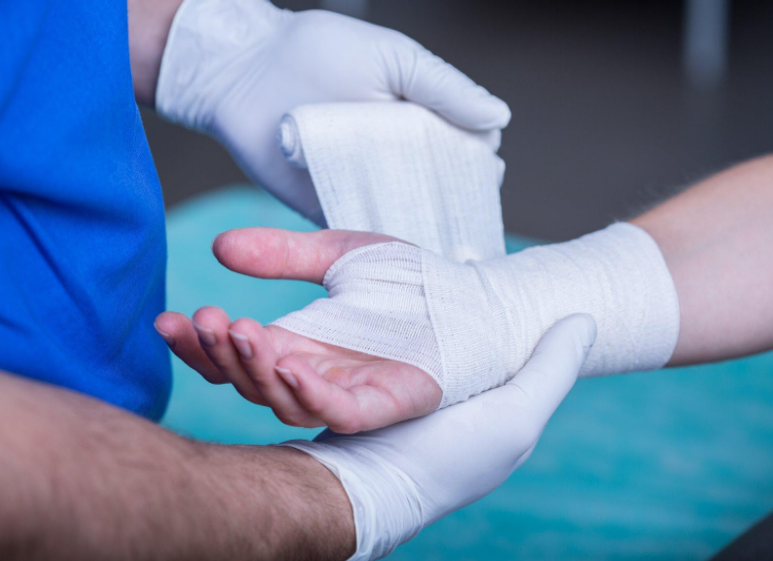Foam Dressing vs Traditional Bandages: Which is Better for Wound Healing?
Have you ever wondered whether a foam dressing or a traditional bandage is more effective in promoting wound healing? This is a question many people ask, especially those providing care for individuals with wounds.
In this guide, we aim to answer this question. We’ll delve into the specifics of each type of dressing, highlighting their pros and cons and comparing their effectiveness in enhancing the healing process.
By the end of this reading, you’ll be well-equipped to make informed decisions on wound care.
Table of Contents
Absorption Capacity
One important factor to consider when choosing a wound dressing is its ability to absorb. A dressing’s absorption capacity speaks to how much wound fluid it can take in. This is a crucial aspect as it helps to keep the wound clean and moist, which promotes faster healing.
Traditional bandages aren’t very absorbent. They can soak up some fluid, but not a lot. On the other hand, foam dressings are highly absorbent. They can soak up a lot of fluid, which helps keep the wound clean and aids the healing process.
Moisture Balance
Maintaining the right moisture balance is another critical element in wound healing. A wound that’s too dry can delay the healing process. But a wound that’s too wet can lead to other problems, like infection. Both foam dressings and traditional bandages play a role in managing this balance.
Traditional bandages can keep a wound dry but may not provide enough moisture for optimal healing. Foam dressings, however, strike a good balance. They can absorb excess fluid while keeping the wound environment moist, which is beneficial for healing.
Breathability
When it comes to wound patches, one important thing to consider is how well they breathe. It means how well the dressing lets air pass through, which is important for healing and lowering the risk of illness.
Normal bandages let air get to the area because they are permeable. The fact that they breathe means that germs can get in and cause an infection. On the other hand, foam bandages let the skin breathe while keeping bacteria out. Because of these things, foam bandages are a safe and effective way to help wounds heal.
Conformability
Conformability refers to how well a dressing adapts to the shape of the wound and body. This is important because a dressing that fits well can provide better wound coverage and help speed up healing. Traditional bandages are flexible, can be cut to size, and often work well for simple, flat wounds.
Foam dressings, on the other hand, come in various shapes and sizes and are also flexible. They can conform to complex wound shapes, even those with depth, ensuring the entire wound is covered properly. This makes foam dressings an excellent choice for wounds that are not flat or are in difficult-to-dress areas.
Protection from Contamination
Protecting a wound from contamination is vital for a speedy and safe healing process. The dressing significantly shields the wound from potentially harmful external factors such as bacteria and debris. Both foam dressings and traditional bandages have their strengths in this aspect.
Traditional bandages provide a basic level of protection against contaminants. However, they may not offer a complete seal, exposing the wound to harmful particles. Foam dressings, on the other hand, offer superior protection. They provide a secure barrier, sealing the wound entirely and preventing the entry of contaminants, thus reducing the risk of infection.
Change Frequency
When a cut is healing, how often the dressing is changed is an important thing to think about. Depending on the state of the wound, traditional bandages need to be changed often, sometimes several times a day. This might be annoying, and it might also slow down the healing process.
On the other hand, foam bandages can stay in place longer because they can absorb a lot of fluid. Because they don’t need to be changed, they can stay on the cut for several days, making it a stable place to heal. This makes caring for wounds easier and makes it less likely that the wound will hurt or be swollen when the dressing is changed.
Wound Type and Severity
The type and severity of a wound are also critical in deciding between a foam dressing and a traditional bandage. Traditional bandages can provide adequate protection and aid healing for minor cuts and scrapes. They are also readily available and easy to use, making them a practical choice for wound care.
Foam dressings are often a better choice for more severe or complex wounds, such as pressure sores or leg ulcers. They can manage high volumes of wound fluid, maintain a moist healing environment, and conform to different wound shapes, which are essential for healing such wounds.
Patient Comfort
It’s important to consider how the patient feels when caring for wounds. Choosing a difficult dressing could make the patient feel worse, which could slow down the healing process; even though simple and easy to use, traditional wound dressings can be painful at times, especially when you change them because they stick to the skin.
On the other hand, patients often say that foam dressings are more comfy. Instead of being rough and painful, they are softer and more gentle on the skin, making changing beds more comfortable. Because they stay in place longer, dressings don’t have to be changed as often, making the patient even more comfortable.
Ease of Application
Finally, ease of application is crucial for caregivers and healthcare professionals responsible for dressing wounds. Traditional bandages are generally straightforward to apply, even for those with limited experience. However, they may require frequent changes, which could be time-consuming.
Foam dressings offer the convenience of being easy and quick to apply. They come in various shapes and sizes, making finding one that fits the wound’s shape and size easier. This article about first aid dressing can guide healthcare providers and individuals on the appropriate use and application techniques.
Let Foam Dressing Embrace Healing Excellence
In conclusion, when it comes to wound care, selecting the appropriate dressing is crucial. While traditional bandages have their place, foam dressings offer numerous benefits, like superior absorption, better protection against contamination, and enhanced patient comfort. These factors make foam dressings a sound choice, especially for more complex or severe wounds.
So, when managing wound recovery, consider the advantages of foam dressing for optimal healing.
Did you learn something new from this article? If so, be sure to check out our blog for more educational content.












